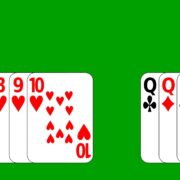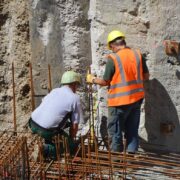
There are three kinds of market analysis in forex trading: technical, fundamental, and sentiment—these three work hand in hand to help traders. Nothing is better than the other as one complements the other. Under technical analysis, traders and analysts spend most of their time analyzing and studying charts. These charts are also further subdivided into three: the line, bar, and Japanese candlestick charts. This article will give us a quick summary of the latter: the Japanese candlestick charts and patterns.
Let us start with the parts of the candlestick:
- The body. The body is also known as the real body. It may be hollow or color white. It can also be filled or black. These are colors that can be modified. Some use green and red, and some may prefer other colors. Since charts are visual, others prefer vibrant colors for easy identification. The candlestick is usually white or hollow if the close is on the open’s above, and we draw a black or filled candlestick if the close is below the open.
- The shadows. These are lines extending on the upper or lower part of the body. They display the high and low range.
- The high. It is the upper shadow’s high.
- The low. It is the lower shadow’s low.
The real body and the shadows
If a candlestick has a long body, then there is intense buying or selling. The longer the body, the stronger the buying or selling pressure. If a candlestick has a short or petite body, then there is very minimal buying or selling. When we say bulls, we refer to buyers while bears refer to sellers.
The upper shadow signifies the session high, while the lower shadow signifies the session low.
The bars and the Japanese candlestick chart patterns
We can categorize candlestick chart patterns with their number of bars. They may be single, dual, or triple candlestick formations. These formations also have different patterns, and we are going to name some of the most popular ones below:
- Single bar: The spinning tops, the Marubozu, the Doji, the hanging man, and the shooting star
- Two bars: Bullish engulfing, bearish engulfing, tweezer tops, and tweezer bottoms
- Three bars: morning stars, evening stars, three black crows, three white soldiers, three inside up, and three inside down
There are plenty of reliable Japanese candlestick cheat sheets if you are not aware of these candlestick patterns or how they work.
An unsolicited but helpful advice
Candlesticks may be helpful to traders, but they mean nothing if they are alone. One must also be aware of the market and the price action. Candlesticks may suggest a reversal or continuation, but these are not always guaranteed to happen. Also, candlestick analysis works best with support and resistance levels to make sound trading ideas and decisions.
Thank you, Steve Nison.
Steve Nison took an interest in these Japanese candlestick charts that he learned from a fellow Japanese broker. What was once a secret technique is now widely used and a very helpful one. He even wrote a book about it, and it is entitled: Japanese Candlestick Charting: A Contemporary Guide to the Ancient Techniques of the Far East.










